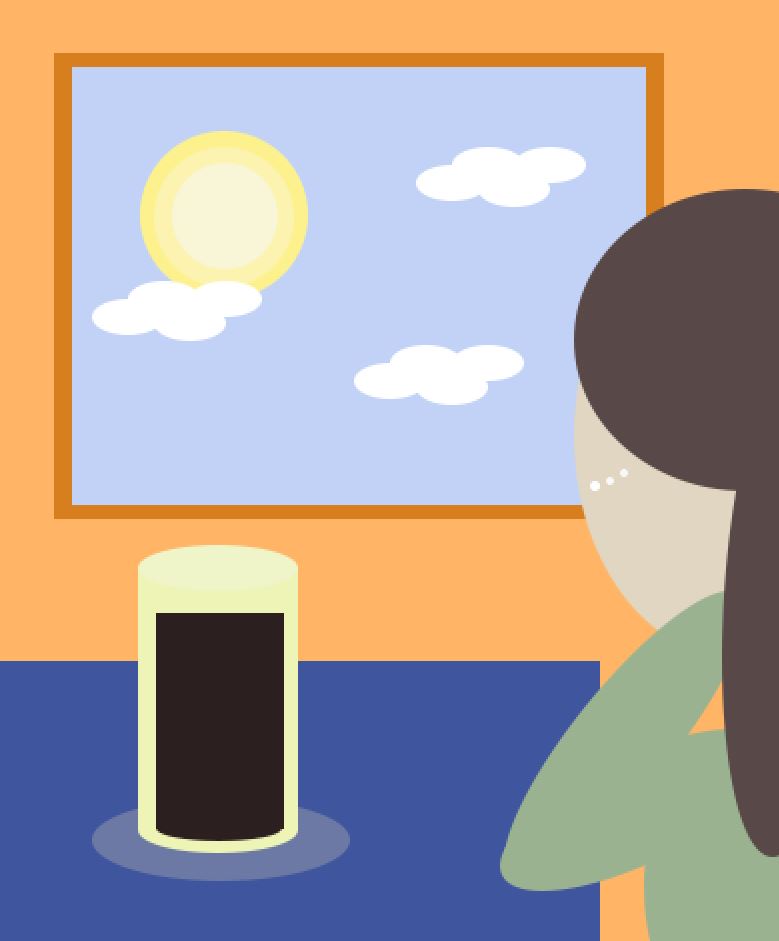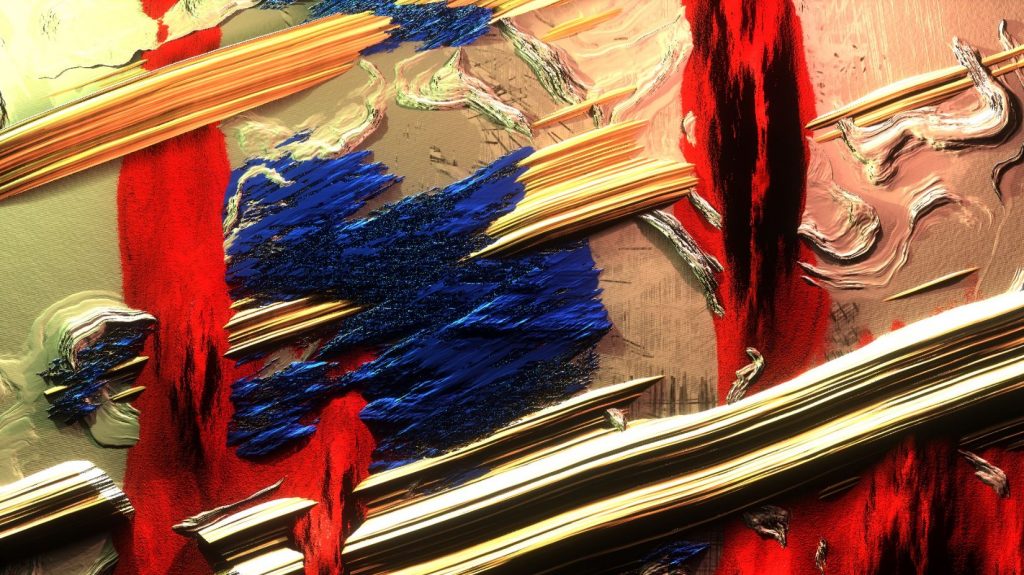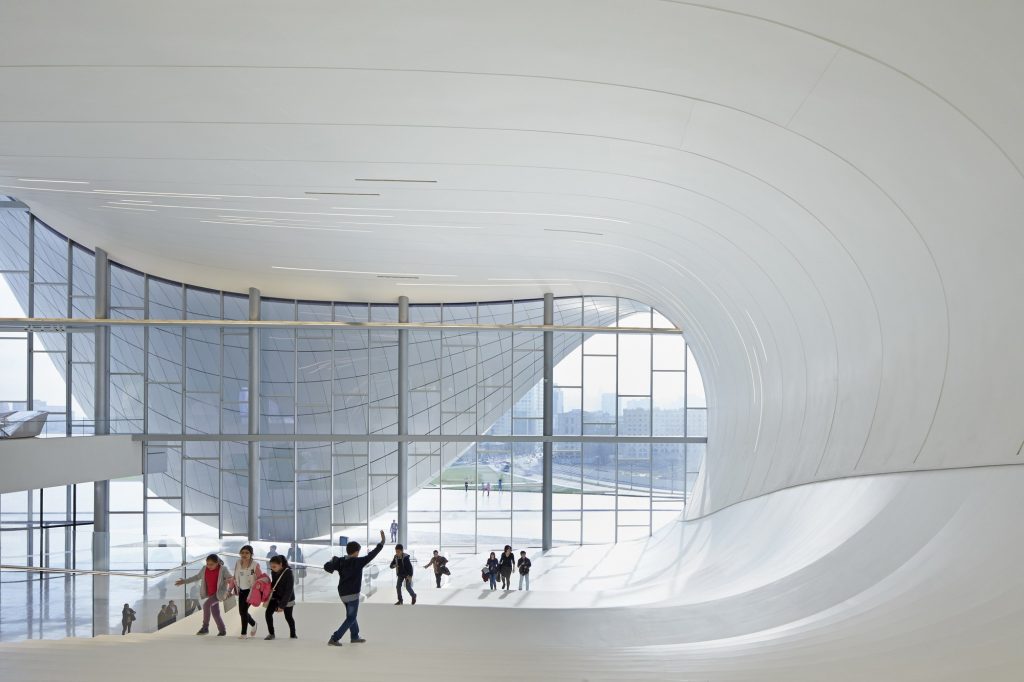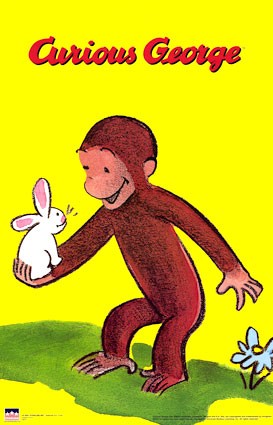function setup() {
createCanvas(400, 480);
frameRate(15);
}
function draw() {
var h = hour();
var m = minute();
var s = second();
var mapS = map(s, 0, 59, 0, 108); var mapM = map(m, 0, 59, 0, 129);
background(255, 181, 101);
noStroke();
fill(63, 85, 157);
rect(1, 335, 320, 146);
noStroke();
fill(215, 126, 31);
rect(31, 31, 305, 233);
noStroke();
fill(193, 210, 246);
rect(40, 38, 287, 219);
for (var i=1; i<=h; i++) {
if (i>=8 & i<=12) {
noStroke();
fill(255, 196, 137);
rect(40, 38, 287, 219);
}
if (i>12 & i<=18) {
noStroke();
fill(193, 210, 246);
rect(40, 38, 287, 219);
}
if (i>18 & i<=24) {
noStroke();
fill(29, 42, 117);
rect(40, 38, 287, 219);
}
}
for (var i=1; i<=h; i++) {
if (i>=7 & i<=12) { noStroke();
fill(253, 241, 142); ellipse(116, 112, 83, 83);
fill(251, 243, 175); ellipse(116, 112, 69, 69);
fill(249, 245, 215); ellipse(116, 112, 53, 53);
}
if (i>12 & i<=18) { noStroke();
fill(255, 152, 68);
ellipse(116, 112, 83, 83);
fill(255, 205, 68);
ellipse(116, 112, 69, 69);
fill(252, 228, 108);
ellipse(116, 112, 53, 53);
}
if (i>18 & i<=24) { noStroke();
fill(119, 119, 119); ellipse(116, 112, 83, 83);
fill(170, 170, 170); ellipse(116, 112, 69, 69);
fill(209, 209, 209); ellipse(116, 112, 53, 53);
}
if (i>=1 & i<8) { noStroke();
fill(119, 119, 119); ellipse(116, 112, 83, 83);
fill(170, 170, 170); ellipse(116, 112, 69, 69);
fill(209, 209, 209); ellipse(116, 112, 53, 53);
}
}
noStroke();
fill(255);
ellipse(230, 96, 36, 18);
ellipse(248, 87, 36, 18);
ellipse(279, 87, 36, 18);
ellipse(261, 99, 36, 18);
noStroke();
fill(255);
ellipse(248, 186, 36, 18);
ellipse(230, 198, 36, 18);
ellipse(217, 186, 36, 18);
ellipse(199, 195, 36, 18);
noStroke();
fill(255);
ellipse(117, 154, 36, 18);
ellipse(99, 166, 36, 18);
ellipse(86, 154, 36, 18);
ellipse(68, 163, 36, 18);
noStroke();
fill(249, 245, 215);
ellipse(370, 222, 160, 221);
stroke(0);
strokeWeight(1);
fill(0);
beginShape();
curveVertex(301, 347);
curveVertex(309, 245);
curveVertex(316, 241);
endShape();
noStroke();
fill(155, 178, 145);
ellipse(370, 448, 100, 240);
noStroke();
fill(88, 72, 72);
ellipse(376, 174, 171, 151);
ellipse(397, 305, 65, 255);
for (var i=0; i<=m; i++) {
if (i>=0 & i<15) { noStroke();
fill(108, 121, 164);
ellipse(145, 413, 120+mapM, 35+mapM);
}
if (i>=15 & i<30) { noStroke();
fill(226, 61, 110);
ellipse(145, 413, 120+mapM, 35+mapM);
}
if (i>=30 & i<45) { noStroke();
fill(63, 255, 86);
ellipse(145, 413, 120+mapM, 35+mapM);
}
if (i>=45 & i<=59) { noStroke();
fill(201, 147, 255);
ellipse(145, 413, 120+mapM, 35+mapM);
}
}
stroke(0);
strokeWeight(1);
fill(237, 244, 181);
rect(105, 284, 80, 131);
ellipse(145, 413, 80, 23);
stroke(0);
strokeWeight(1);
fill(239, 244, 201);
ellipse(145, 285, 80, 23);
noStroke();
fill(255, 175, 175); ellipse(145, 413, 60, 13);
rect(115, 414, 60, -mapS);
}
For this project, I wanted to show the different times during the day through the setting of my working area and my favorite beverage to drink. During the day, the window would show the sun and blue sky. During the evening, the window would show the moon and dark sky. Therefore, it changes depending on the hour. As for minutes, I decided to change the size and color of the coaster whenever the time hits 00, 15, 30, or 45. Lastly, the seconds are shown through the increasing amount of pink lemonade within the glass. Below is a drawing I made in photoshop to help me create this project.
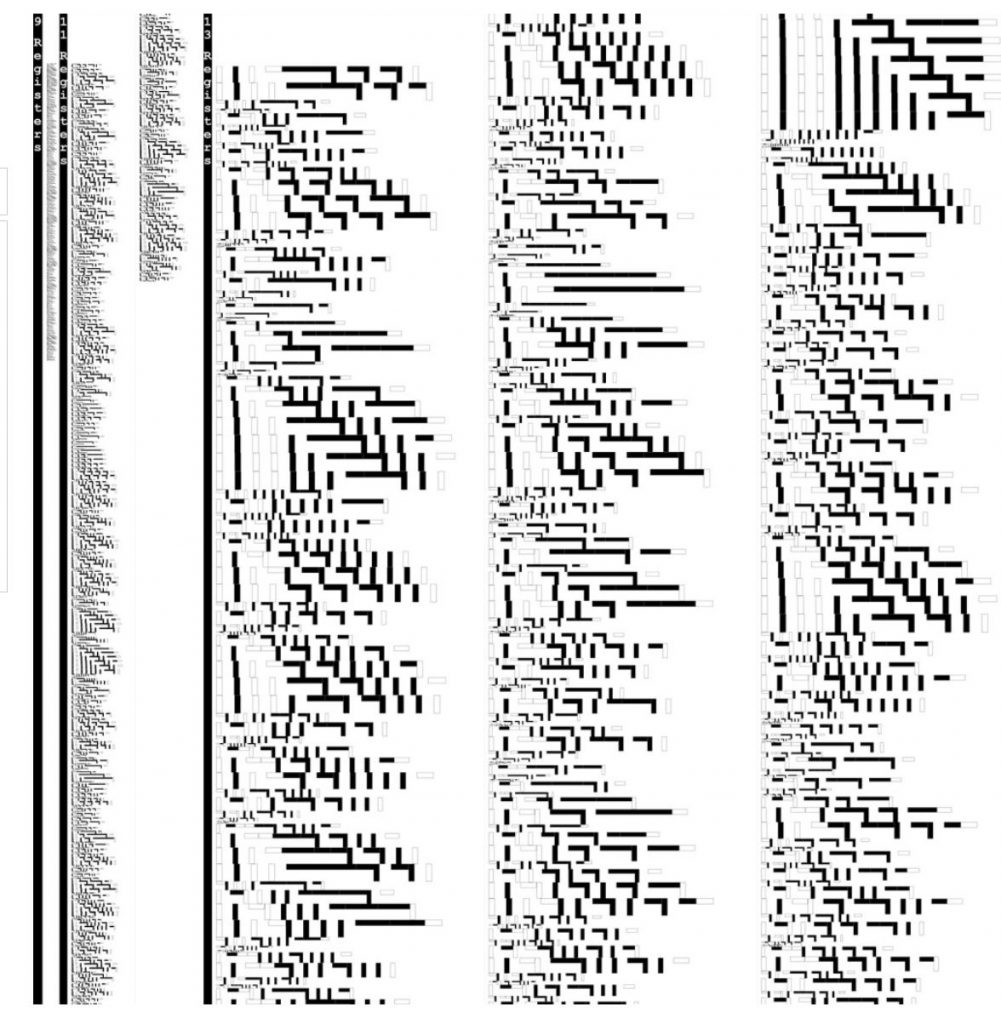
![[OLD FALL 2020] 15-104 • Introduction to Computing for Creative Practice](../../../../wp-content/uploads/2021/09/stop-banner.png)
